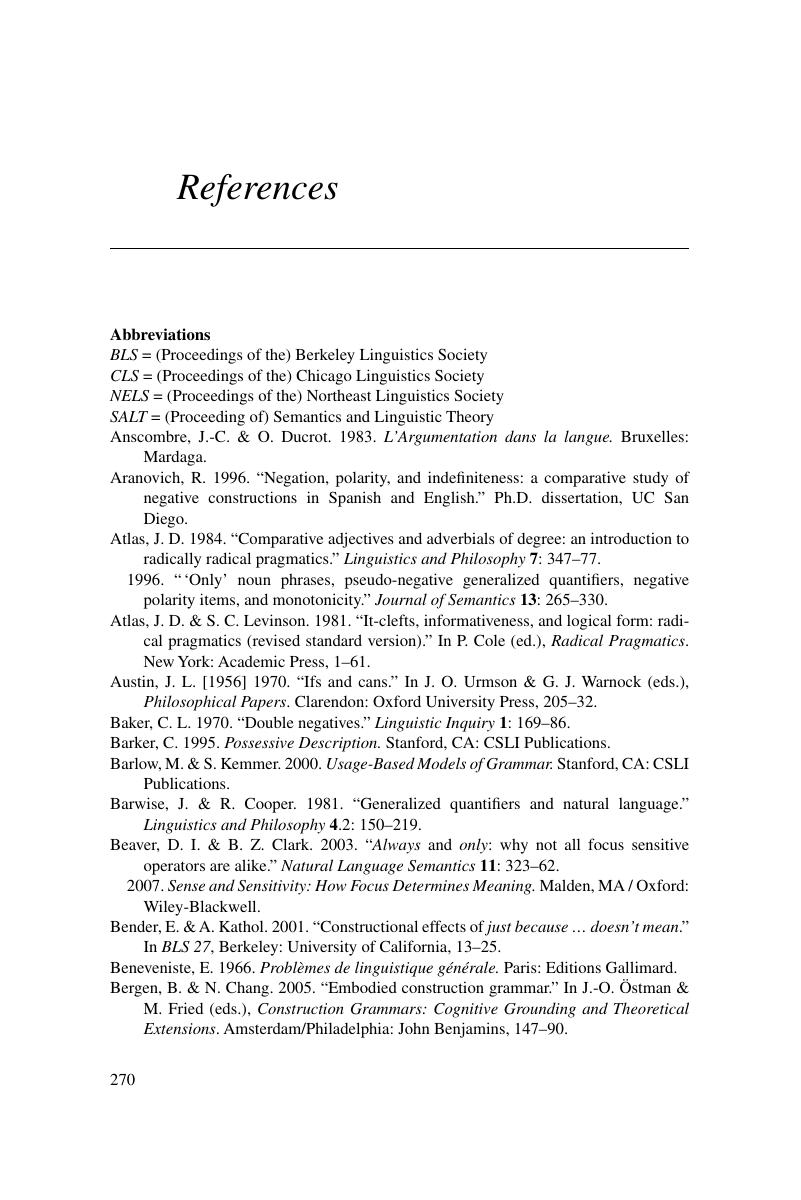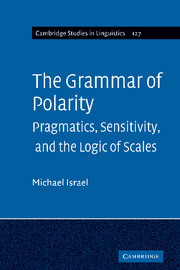Book contents
- Frontmatter
- Contents
- List of figures
- List of tables
- Acknowledgments
- List of abbreviations
- 1 Trivium pursuits
- 2 Ex nihilo: the grammar of polarity
- 3 Licensing and the logic of scalar models
- 4 Sensitivity as inherent scalar semantics
- 5 The elements of sensitivity
- 6 The scalar lexicon
- 7 The family of English indefinite polarity items
- 8 Polarity and the architecture of grammar
- 9 The pragmatics of polarity licensing
- 10 Visions and revisions
- Appendix: A catalogue of English polarity items
- Notes
- References
- General index
- Person index
- References
References
Published online by Cambridge University Press: 07 September 2011
- Frontmatter
- Contents
- List of figures
- List of tables
- Acknowledgments
- List of abbreviations
- 1 Trivium pursuits
- 2 Ex nihilo: the grammar of polarity
- 3 Licensing and the logic of scalar models
- 4 Sensitivity as inherent scalar semantics
- 5 The elements of sensitivity
- 6 The scalar lexicon
- 7 The family of English indefinite polarity items
- 8 Polarity and the architecture of grammar
- 9 The pragmatics of polarity licensing
- 10 Visions and revisions
- Appendix: A catalogue of English polarity items
- Notes
- References
- General index
- Person index
- References
Summary

- Type
- Chapter
- Information
- The Grammar of PolarityPragmatics, Sensitivity, and the Logic of Scales, pp. 270 - 284Publisher: Cambridge University PressPrint publication year: 2011



